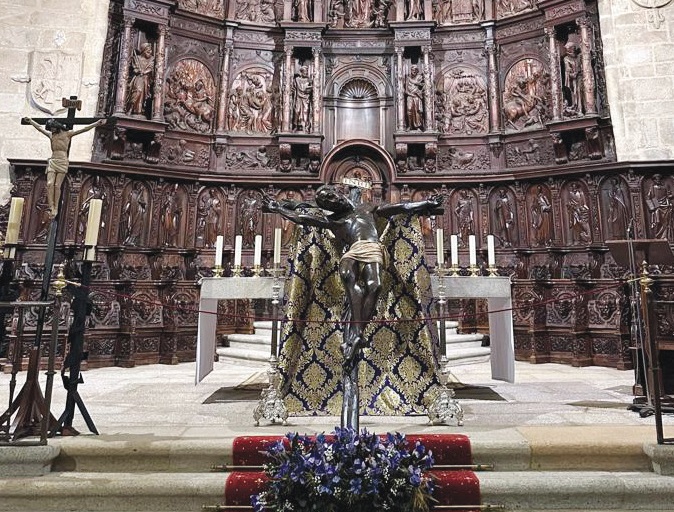UNESCO, I go again
Lives of great men all remind us We can make our lives sublime, And, departing, leave behind us Footprints on the sands of time.
Apr 25, 2025

Getting Side Tracked - Agnes Ong
Lives of great men all remind us We can make our lives sublime, And, departing, leave behind us Footprints on the sands of time. Henry Wadsworth Longfellow in A Psalm of Life I spend much of my adult life travelling, and in my travels, I search for and visit UNESCO World Heritage sites. Thus far, my journeys have primarily centred in Southeast Asia, due to its proximity and affordability, as well as Europe, driven by my interest in history and art.
A friend once asked me why I spend my hard-earned money travelling, as all that I learn and discover on my journeys will one day end with me. While that is true for me, as I have yet to find a way to sustainably and profitably fund my travel experiences, I am struck by what South Korean actor and singer Lee Min Ho recently told The New York Times. Lee said, “Visiting historical sites allows me to imagine the lives of those who once lived there, even though they are no longer present. I become immersed in the era, picturing what those people were thinking, how they laughed, cried, and moved in their daily lives.”
Recently, I have been to both Spain and China and have been able to explore additional UNESCO World Heritage locations.
In March, a chance encounter with hostel manager Hector in Arzua, while completing my Camino de Santiago Walk in Spain led me to Cáceres. Hector’s enthusiasm for Cáceres was so infectious that I soon found myself booking a bus ticket to the town without conducting my usual research about the place.
Cáceres, an embattled land
The Old Town of Cáceres was the site of strategic battles between the Moors and Christians during the 12th and 13th centuries. Previously, I wrote about my travels through the cities in Spain that were under Moorish rule for approximately 800 years before the Christian kings rose to power.
The numerous buildings and fortifications in the Old Town of Cáceres reflect the various eras of its rulers: the Romans, who established their presence in 25 BC and ruled for 400 years; the Visigoths, who governed during the 5th and 6th centuries AD; the Moors, who began their rule in the 9th century; and the Christian Kingdoms, which took control in 1229.
Echoes of valour for king and glory resound against these walls and in the hilly cobbled paths. One story about the Fratres of Cáceres, a military order made up of monks and soldiers, has them fighting valiantly against the invasion of the Almohads in 1171. The Fratres held out against the Almohads for six months until finally, trapped in the Tower of Bujaco, the last bastion, the invaders surged into the tower, overpowered the Fratres, and sliced their throats.
Legend has it that Cáceres fell into the hands of Alfonso IX because the daughter of an Almohad ruler fell in love with a Christian soldier and showed him a secret entrance to the Tower of Pozos, and the city, which the Moorish soldiers had been using. The girl’s father was understandably furious and locked her in an underground chamber in the Alcazaba (Moorish citadel). Some more fantastical stories said he turned her into a chicken that roams the city streets on Saint John’s night (one might also consider avoiding having chicken for dinner on the eve of St John the Baptist’s feast day).
Walking through Cáceres’s cobbled streets, it is almost surreal to imagine that these are the same paths many leather-soled (now rubber) lives have walked on their daily errands for over 2,000 years and will continue to do so.
UNESCO World Heritage in Malaysia
Phil Rosenthal, host of Somebody Feed Phil, told the BBC: “Travel is a mind-expanding thing we can do in life. You come back changed. You come back with a new perspective. (Travel) gives that perspective on life so that you can appreciate what you have at home as well.”
Coming home to Malaysia, I feel that we are fortunate to list five UNESCO World Heritage sites although I hope to see more locations in our country listed in the future, given the rich natural and cultural heritage of our land (that’s my patriotic plug for this month!).
In Peninsular Malaysia, our UNESCO World Heritage locations include the historic cities of Melaka and Georgetown, which are part of the Straits of Melaka, and the Lenggong Valley in Perak, known for its evidence of early human migration from Africa.
In Borneo, two national parks — Kinabalu Park and Gunung Mulu National Park — along with the archaeological significance of the Niah Caves complex, complete our list of World Heritage sites.
It is no secret to my family and friends that I am a big fan of UNESCO World Heritage sites. Without sounding boastful, I am pleased to say that I have visited four of the five UNESCO World Heritage sites in Malaysia.
All our UNESCO sites truly live up to their World Heritage status. Each one holds a piece of our shared soul, echoing stories of humanity, resilience, beauty, and belonging. These aren't just landmarks; they are places that move you, connect you to something greater, and remind you of the wonder and worth of the world we share.
Perhaps, with the school holidays coming up at the end of May, families may want to consider visiting these sites too and be awed by our own World Heritage.
As for me, I plan to visit the Lenggong Valley to see the “Perak Man” before the end of the year to complete my Malaysian UNESCO World Heritage sites list before setting out again into the world in search of other UNESCO sites.
Agnes Ong is a self-professed curious traveller and lifelong learner with a lamentable tendency to get into sidetracked experiences. She aspires to explore as many historical UNESCO sites as possible, funds permitting. Agnes has a travel-slash-work-slash-dump everything IG at @agnes_gets_sidetracked.







Total Comments:0